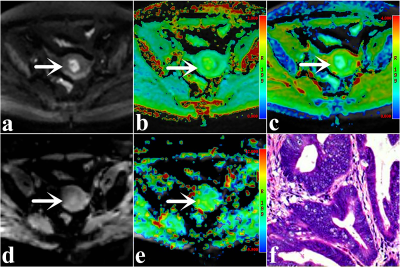Nan Meng1, Zhun Huang2, Ting Fang1, Pengyang Feng2, Xuejia Wang3, Dongming Han3, Kaiyu Wang4, and Meiyun Wang*1
1Department of Radiology, Zhengzhou University People’s Hospital & Henan Provincial People’s Hospital, Zhengzhou, China, 2Department of Radiology, Henan University People’s Hospital & Henan Provincial People’s Hospital, Zhengzhou, China, 3Department of MRI, The First Affiliated Hospital of Xinxiang Medical University, Weihui, China, 4GE Healthcare, MR Research China, BeiJing, China
1Department of Radiology, Zhengzhou University People’s Hospital & Henan Provincial People’s Hospital, Zhengzhou, China, 2Department of Radiology, Henan University People’s Hospital & Henan Provincial People’s Hospital, Zhengzhou, China, 3Department of MRI, The First Affiliated Hospital of Xinxiang Medical University, Weihui, China, 4GE Healthcare, MR Research China, BeiJing, China
Our results showed that both Amide proton transfer-weighted imaging (APTWI) and Diffusion kurtosis imaging (DKI) were effective in the assessment of endometrial carcinoma in terms of clinical type, histological grade, subtype, and Ki-67 index.

Figure.1. Images in a 49-year-old woman with type I, low-grade (grade 1) EA (arrowheads, Ki-67 = 30%). (a) DWI original maps (b = 1000 s/mm2), (b) Pseudo colored maps of Kapp, (c) Pseudo colored maps of Dapp, (d) APTWI original maps, (e) Pseudo colored maps of MTRasym (3.5ppm), (f) Pathological images (original magnification, ×100).

Figure.1. Images in a 49-year-old woman with type I, low-grade (grade 1) EA (arrowheads, Ki-67 = 30%). (a) DWI original maps (b = 1000 s/mm2), (b) Pseudo colored maps of Kapp, (c) Pseudo colored maps of Dapp, (d) APTWI original maps, (e) Pseudo colored maps of MTRasym (3.5ppm), (f) Pathological images (original magnification, ×100).
